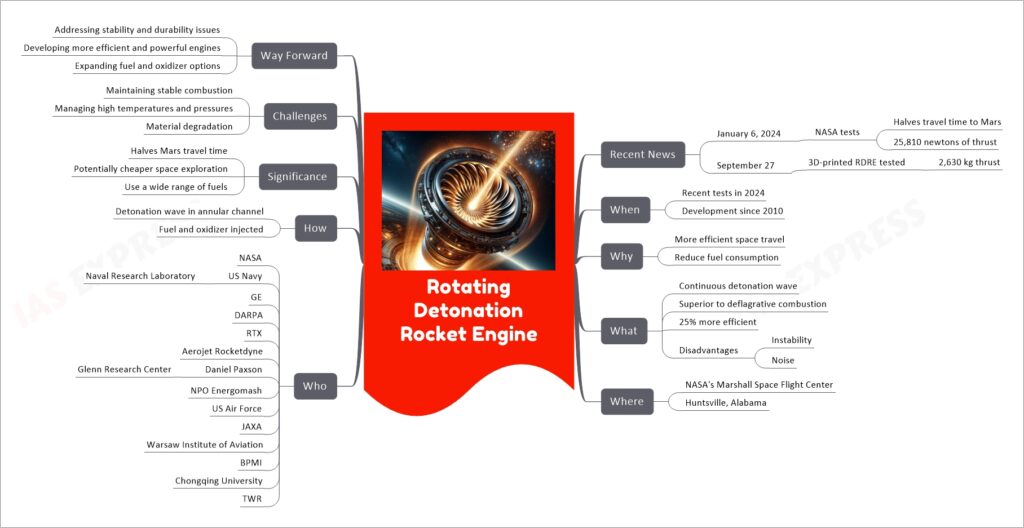Rotating Detonation Rocket Engine

In simple terms, the Rotating Detonation Rocket Engine (RDRE) represents a significant advancement in rocket propulsion technology. Unlike traditional rocket engines that rely on deflagrative combustion, the RDRE uses a continuous detonation wave, making it potentially more efficient and powerful. This technology, still in development, promises to reduce travel time to destinations like Mars, offer more cost-effective space exploration, and use a broader range of fuels. However, it faces challenges like achieving stable combustion over long periods, handling high temperatures and pressures, and preventing material degradation.
If you like this post, please share your feedback in the comments section below so that we will upload more posts like this.

